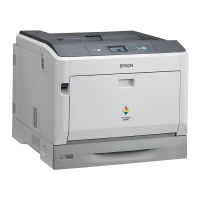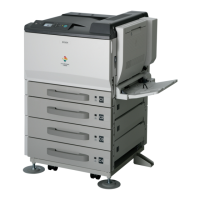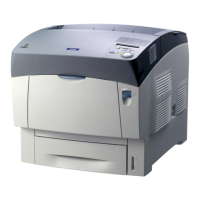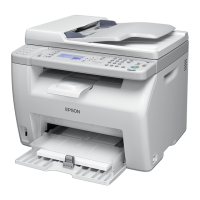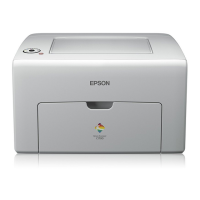Safety Precautions for Inspection and Service
When performing inspection and service procedures, observe the
following precautions to prevent accidents and ensure utmost safety.
* Depending on the model, some of the precautions given in the
following do not apply.
Different markings are used to denote specific meanings as detailed
below.
The following graphic symbols are used to give instructions that need to
be observed.
WARNING
W A R N I N G
Indicates a potentially hazardous situation which, if not
avoided, could result in death or serious injury.
C A U T I O N
Indicates a potentially hazardous situation which, if not
avoided, may result in minor or moderate injury. It may
also be used to alert against unsafe practices.
Used to call the service technician's attention to what is
graphically represented inside the marking (including a
warning).
Used to prohibit the service technician's from doing what is
graphically represented inside the marking.
Used to instruct the service technician's to do what is
graphically represented inside the marking.
1.Always observe precautions.
Parts requiring special attention in this product will include a
label containing the mark shown on the left plus
precautionary notes. Be sure to observe the precautions.
Be sure to observe the “Safety Information” given in the
Operator's Manual.
2.Before starting the procedures, be sure to unplug the power
cord.
This product contains a high-voltage unit and a circuit with a
large current capacity that may cause an electric shock or
burn.
The product also contains parts that can jerk suddenly and
cause injury.
If this product uses a laser, laser beam leakage may cause
eye damage or blindness.
3.Use the specified parts.
For replacement parts, always use the genuine parts
specified in the manufacturer's parts manual. Installing a
wrong or unauthorized part could cause dielectric
breakdown, overload, or undermine safety devices resulting
in possible electric shock or fire.
Replace a blown electrical fuse or thermal fuse with its
corresponding genuine part specified in the manufacturer's
parts manual. Installing a fuse of a different make or rating
could lead to a possible fire. If a thermal fuse blows
frequently, the temperature control system may have a
problem and action must be taken to eliminate the cause of
the problem.
W A R N I N G

